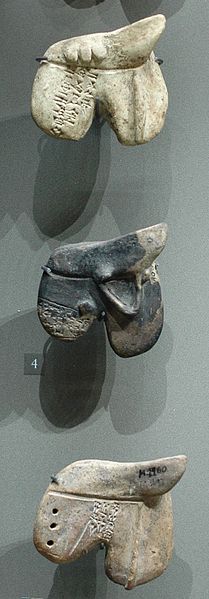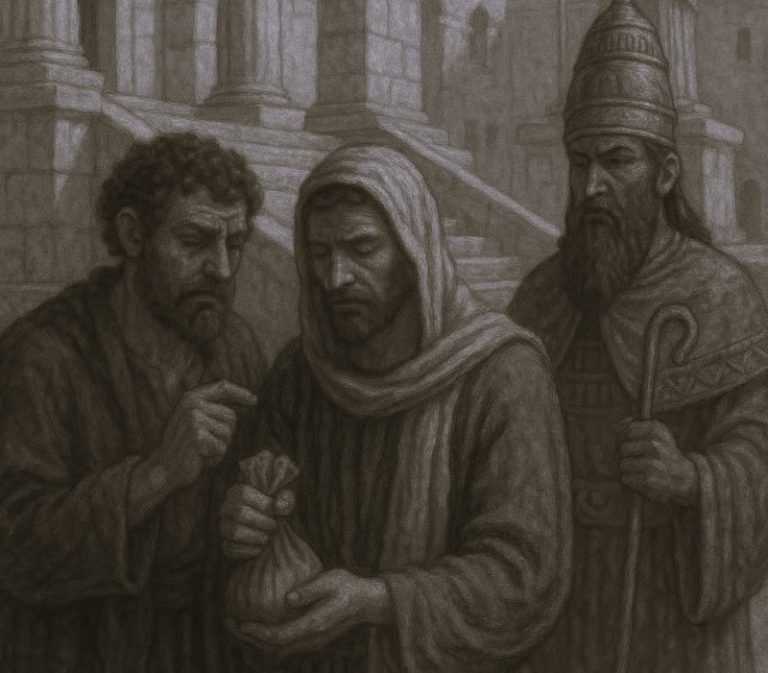


Curated/Reviewed by Matthew A. McIntosh
Public Historian
Brewminate
Introduction
The history of biology traces the study of the living world from ancient to modern times. Although the concept of biology as a single coherent field arose in the 19th century, the biological sciences emerged from traditions of medicine and natural history reaching back to ayurveda, ancient Egyptian medicine and the works of Aristotle and Galen in the ancient Greco-Roman world. This ancient work was further developed in the Middle Ages by Muslim physicians and scholars such as Avicenna. During the European Renaissance and early modern period, biological thought was revolutionized in Europe by a renewed interest in empiricism and the discovery of many novel organisms.
Prominent in this movement were Vesalius and Harvey, who used experimentation and careful observation in physiology, and naturalists such as Linnaeus and Buffon who began to classify the diversity of life and the fossil record, as well as the development and behavior of organisms. Antonie van Leeuwenhoek revealed by means of microscopy the previously unknown world of microorganisms, laying the groundwork for cell theory. The growing importance of natural theology, partly a response to the rise of mechanical philosophy, encouraged the growth of natural history (although it entrenched the argument from design).
Etymology of ‘Biology’
The word biology is formed by combining the Greek βίος (bios), meaning “life”, and so the suffix ‘-logy’, meaning “science of”, “knowledge of”, “study of”, “about of”, based on the Greek verb λέγειν, ‘legein’ “to select”, “to gather” (cf. the noun λόγος, ‘logos’ “word”). The term biology in its modern sense appears to have been introduced independently by Thomas Beddoes (in 1799),[1] Karl Friedrich Burdach (in 1800), Gottfried Reinhold Treviranus (Biologie oder Philosophie der lebenden Natur, 1802) and Jean-Baptiste Lamarck (Hydrogéologie, 1802).[2][3] The word itself appears in the title of Volume 3 of Michael Christoph Hanow’s Philosophiae naturalis sive physicae dogmaticae: Geologia, biologia, phytologia generalis et dendrologia, published in 1766.
Before biology, there were several terms used for the study of animals and plants. Natural history referred to the descriptive aspects of biology, though it also included mineralogy and other non-biological fields; from the Middle Ages through the Renaissance, the unifying framework of natural history was the scala naturae or Great Chain of Being. Natural philosophy and natural theology encompassed the conceptual and metaphysical basis of plant and animal life, dealing with problems of why organisms exist and behave the way they do, though these subjects also included what is now geology, physics, chemistry, and astronomy. Physiology and (botanical) pharmacology were the province of medicine. Botany, zoology, and (in the case of fossils) geology replaced natural history and natural philosophy in the 18th and 19th centuries before biology was widely adopted.[4][5] To this day, “botany” and “zoology” are widely used, although they have been joined by other sub-disciplines of biology.

The earliest humans must have had and passed on knowledge about plants and animals to increase their chances of survival. This may have included knowledge of human and animal anatomy and aspects of animal behavior (such as migration patterns). However, the first major turning point in biological knowledge came with the Neolithic Revolution about 10,000 years ago. Humans first domesticated plants for farming, then livestock animals to accompany the resulting sedentary societies.[6]
The ancient cultures of Mesopotamia, Egypt, the Indian subcontinent, and China, among others, produced renowned surgeons and students of the natural sciences such as Susruta and Zhang Zhongjing, reflecting independent sophisticated systems of natural philosophy. However, the roots of modern biology are usually traced back to the secular tradition of ancient Greek philosophy.[7]
Ancient Mesopotamia
The Mesopotamians seem to have had little interest in the natural world as such, preferring to study how the gods had ordered the universe. Animal physiology was studied for divination, including especially the anatomy of the liver, seen as an important organ in haruspicy. Animal behavior too was studied for divinatory purposes. Most information about the training and domestication of animals was probably transmitted orally, but one text dealing with the training of horses has survived.[8]
The ancient Mesopotamians had no distinction between “rational science” and magic.[9][10][11] When a person became ill, doctors prescribed both magical formulas to be recited and medicinal treatments.[9][10][11] The earliest medical prescriptions appear in Sumerian during the Third Dynasty of Ur (c. 2112 – c. 2004 BCE).[12] The most extensive Babylonian medical text, however, is the Diagnostic Handbook written by the ummânū, or chief scholar, Esagil-kin-apli of Borsippa,[13] during the reign of the Babylonian king Adad-apla-iddina (1069 – 1046 BCE).[14] In East Semitic cultures, the main medicinal authority was an exorcist-healer known as an āšipu.[9][10][11] The profession was passed down from father to son and was held in high regard.[9] Of less frequent recourse was the asu, a healer who treated physical symptoms using remedies composed of herbs, animal products, and minerals, as well as potions, enemas, and ointments or poultices. These physicians, who could be either male or female, also dressed wounds, set limbs, and performed simple surgeries. The ancient Mesopotamians also practiced prophylaxis and took measures to prevent the spread of disease.[8]
Ancient China

In ancient China, biological topics can be found dispersed across several different disciplines, including the work of herbologists, physicians, alchemists, and philosophers. The Taoist tradition of Chinese alchemy, for example, can be considered part of the life sciences due to its emphasis on health (with the ultimate goal being the elixir of life).
The system of classical Chinese medicine usually revolved around the theory of yin and yang, and the five phases.[15] Taoist philosophers, such as Zhuangzi in the 4th century BCE, also expressed ideas related to evolution, such as denying the fixity of biological species and speculating that species had developed differing attributes in response to differing environments.[16]
Ancient India
One of the oldest organised systems of medicine is known from the Indian subcontinent in the form of Ayurveda which originated around 1500 BCE from Atharvaveda (one of the four most ancient books of Indian knowledge, wisdom and culture).
The ancient Indian Ayurveda tradition independently developed the concept of three humours, resembling that of the four humours of ancient Greek medicine, though the Ayurvedic system included further complications, such as the body being composed of five elements and seven basic tissues. Ayurvedic writers also classified living things into four categories based on the method of birth (from the womb, eggs, heat & moisture, and seeds) and explained the conception of a fetus in detail. They also made considerable advances in the field of surgery, often without the use of human dissection or animal vivisection.[17] One of the earliest Ayurvedic treatises was the Sushruta Samhita, attributed to Sushruta in the 6th century BCE. It was also an early materia medica, describing 700 medicinal plants, 64 preparations from mineral sources, and 57 preparations based on animal sources.[18]
Ancient Egypt
Over a dozen medical papyri have been preserved, most notably the Edwin Smith Papyrus (the oldest extant surgical handbook) and the Ebers Papyrus (a handbook of preparing and using materia medica for various diseases), both from the 16th century BCE.
Ancient Egypt is also known for developing embalming, which was used for mummification, in order to preserve human remains and forestall decomposition.[19]
Ancient Greece and Rome

The pre-Socratic philosophers asked many questions about life but produced little systematic knowledge of specifically biological interest—though the attempts of the atomists to explain life in purely physical terms would recur periodically through the history of biology. However, the medical theories of Hippocrates and his followers, especially humorism, had a lasting impact.[20]
The philosopher Aristotle was the most influential scholar of the living world from classical antiquity. Though his early work in natural philosophy was speculative, Aristotle’s later biological writings were more empirical, focusing on biological causation and the diversity of life. He made countless observations of nature, especially the habits and attributes of plants and animals in the world around him, which he devoted considerable attention to categorizing. In all, Aristotle classified 540 animal species, and dissected at least 50. He believed that intellectual purposes, formal causes, guided all natural processes.[21]
Aristotle, and nearly all Western scholars after him until the 18th century, believed that creatures were arranged in a graded scale of perfection rising from plants on up to humans: the scala naturae or Great Chain of Being.[22] Aristotle’s successor at the Lyceum, Theophrastus, wrote a series of books on botany—the History of Plants—which survived as the most important contribution of antiquity to botany, even into the Middle Ages. Many of Theophrastus’ names survive into modern times, such as carpos for fruit, and pericarpion for seed vessel. Dioscorides wrote a pioneering and encyclopaedic pharmacopoeia, De Materia Medica, incorporating descriptions of some 600 plants and their uses in medicine. Pliny the Elder, in his Natural History, assembled a similarly encyclopaedic account of things in nature, including accounts of many plants and animals.[23]
A few scholars in the Hellenistic period under the Ptolemies—particularly Herophilus of Chalcedon and Erasistratus of Chios—amended Aristotle’s physiological work, even performing dissections and vivisections.[24] Claudius Galen became the most important authority on medicine and anatomy. Though a few ancient atomists such as Lucretius challenged the teleological Aristotelian viewpoint that all aspects of life are the result of design or purpose, teleology (and after the rise of Christianity, natural theology) would remain central to biological thought essentially until the 18th and 19th centuries. Ernst W. Mayr argued that “Nothing of any real consequence happened in biology after Lucretius and Galen until the Renaissance.”[25] The ideas of the Greek traditions of natural history and medicine survived, but they were generally taken unquestioningly in medieval Europe.[26]
Medieval and Islamic Knowledge

The decline of the Roman Empire led to the disappearance or destruction of much knowledge, though physicians still incorporated many aspects of the Greek tradition into training and practice. In Byzantium and the Islamic world, many of the Greek works were translated into Arabic and many of the works of Aristotle were preserved.[27]

De arte venandi, by Frederick II, Holy Roman Emperor, was an influential medieval natural history text that explored bird morphology.
During the High Middle Ages, a few European scholars such as Hildegard of Bingen, Albertus Magnus and Frederick II wrote on natural history. The rise of European universities, though important for the development of physics and philosophy, had little impact on biological scholarship.[28]
Appendix
Endnotes
- “biology, n“. Oxford English Dictionary online version. Oxford University Press. September 2011. Retrieved 1 November 2011. (subscription or UK public library membership required)
- Junker Geschichte der Biologie, p8.
- Coleman, Biology in the Nineteenth Century, pp 1–2.
- Mayr, The Growth of Biological Thought, pp36–37
- Coleman, Biology in the Nineteenth Century, pp 1–3.
- Magner, A History of the Life Sciences, pp 2–3
- Magner, A History of the Life Sciences, pp 3–9
- McIntosh, Jane R. (2005). Ancient Mesopotamia: New Perspectives. Santa Barbara, California, Denver, Colorado, and Oxford, England: ABC-CLIO. pp. 273–276.
- Farber, Walter (1995). Witchcraft, Magic, and Divination in Ancient Mesopotamia. Civilizations of the Ancient Near East. 3. New York City, New York: Charles Schribner’s Sons, MacMillan Library Reference USA, Simon & Schuster MacMillan. pp. 1891–1908.Retrieved 12 May 2018.
- Abusch, Tzvi (2002). Mesopotamian Witchcraft: Towards a History and Understanding of Babylonian Witchcraft Beliefs and Literature. Leiden, The Netherlands: Brill. p. 56.
- Brown, Michael (1995). Israel’s Divine Healer. Grand Rapids, Michigan: Zondervan. p. 42.
- R D. Biggs (2005). “Medicine, Surgery, and Public Health in Ancient Mesopotamia”. Journal of Assyrian Academic Studies. 19 (1): 7–18.
- Heeßel, N. P. (2004). “Diagnosis, Divination, and Disease: Towards an Understanding of the Rationale Behind the Babylonian Diagonostic Handbook“. In Horstmanshoff, H. F. J.; Stol, Marten; Tilburg, Cornelis (eds.). Magic and Rationality in Ancient Near Eastern and Graeco-Roman Medicine. Studies in Ancient Medicine. 27. Leiden, The Netherlands: Brill. pp. 97–116.
- Marten Stol (1993), Epilepsy in Babylonia, p. 55, Brill Publishers.
- Magner, A History of the Life Sciences, p. 4
- Needham, Joseph; Ronan, Colin Alistair (1995). The Shorter Science and Civilisation in China: An Abridgement of Joseph Needham’s Original Text, Vol. 1. Cambridge University Press. p. 101.
- Magner, A History of the Life Sciences, p. 6
- Girish Dwivedi, Shridhar Dwivedi (2007). “History of Medicine: Sushruta – the Clinician – Teacher par Excellence” (PDF). Indian J Chest Dis Allied Sci. National Informatics Centre. 49: 243–244. Archived from the original (PDF) on 10 October 2008. Retrieved 8 October 2008.
- Magner, A History of the Life Sciences, p. 8
- Magner, A History of the Life Sciences, pp 9–27
- Mayr, The Growth of Biological Thought, pp 84–90, 135; Mason, A History of the Sciences, p 41–44
- Mayr, The Growth of Biological Thought, pp 201–202; see also: Lovejoy, The Great Chain of Being
- Mayr, The Growth of Biological Thought, pp 90–91; Mason, A History of the Sciences, p 46
- Barnes, Hellenistic Philosophy and Science, p 383–384
- Mayr, The Growth of Biological Thought, pp 90–94; quotation from p 91
- Annas, Classical Greek Philosophy, p 252
- Mayr, The Growth of Biological Thought, pp 91–94
- Mayr, The Growth of Biological Thought, pp 91–94: “As far as biology as a whole is concerned, it was not until the late eighteenth and early nineteenth century that the universities became centers of biological research.”
Bibliography
- Annas, Julia Classical Greek Philosophy. In Boardman, John; Griffin, Jasper; Murray, Oswyn (ed.) The Oxford History of the Classical World. Oxford University Press: New York, 1986.
- Junker, Thomas. Geschichte der Biologie. C. H. Beck: München, 2004.
- Coleman, William Biology in the Nineteenth Century: Problems of Form, Function, and Transformation. Cambridge University Press: New York, 1977.
- Mayr, Ernst. The Growth of Biological Thought: Diversity, Evolution, and Inheritance. The Belknap Press of Harvard University Press: Cambridge, Massachusetts, 1982.
- Mayr, Ernst and William B. Provine, eds. The Evolutionary Synthesis: Perspectives on the Unification of Biology. Harvard University Press: Cambridge, 1998.
- McIntosh, Jane R. (2005). Ancient Mesopotamia: New Perspectives. Santa Barbara, California, Denver, Colorado, and Oxford, England: ABC-CLIO.
Originally published by Wikipedia, 09.20.2003, under a Creative Commons Attribution-ShareAlike 3.0 Unported license.






